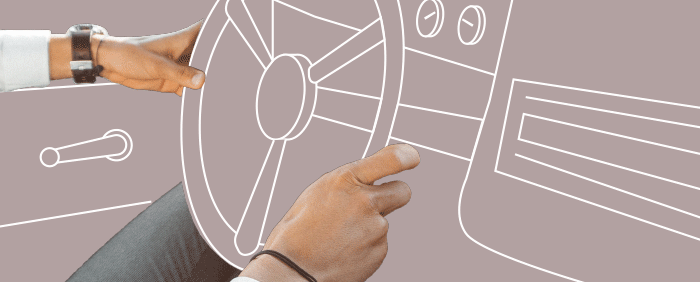Companies often desire for a product or service to be ‘intuitive to use’ or incorporate ‘intuitive design’ but what does this mean in reality and does intuitive design actually exist?
Intuition is possible when we can utilise our prior knowledge from experiences to perform a task. Psychologists differentiate between two types of memory retrieval –recall and recognition. Recognition focuses on retrieving memories of familiarity while recall designates the retrieval of detailed information. Think back to being in school. Typically it would be easier to correctly answer a multiple-choice question than answer an open-ended question or essay. This is because less mental effort is required to recognise the correct response within a pool of clearly visible answers than to compose a unique response. As recognition takes less mental effort, designers need to utilise and build on this. For example, we know to push a push-button and expect something to change as a result. Similarly, we expect a knob to turn. Issues arise if someone has to process too much new information or if we receive unexpected responses. This is when cognitive overload can occur, resulting in discomfort and information being lost. Therefore, designers should take responsibility to ensure users aren’t overwhelmed.
There is a balancing act, however. We can lose attention if too little mental effort is required; a design that is too plain (e.g. unbranded food packaging) may not hold our attention and one too complex may overload us. This is why examples of intuitive design are not immediately obvious but the unintuitive design is obvious, such as a microwave with far too many buttons which you have to press in a particular sequence otherwise nothing happens or a washing machine with over 100 control operations when you only need one setting 90% of the time.
The difficulty with creating a new product or service is that no two users are the same, so what is intuitive to one person may not be intuitive to another. A complex product you use every day, like a smartphone, can often be used with ease while a simpler product can feel very unintuitive because you have no prior knowledge of using it. This is an issue particularly with new features, technologies or types of control. One of our colleagues was involved in developing controls for a new range of inductive cookers that would show the flexibility offered by the technology while being intuitive for consumers who had never seen the device before. The solution was borrowed from semantic cues that consumers were familiar with in other markets such as automotive seating controls. There is often a push for brands to add more features than their competitors’ products and make these features as visible as possible, but this can inhibit a product’s user experience and hinder the chances of future commercial success.
When a design is intuitive, the design becomes invisible, going unnoticed and unappreciated, while the unintuitive design can be disruptive and immediately noticeable. Rather than focusing on parallel competitors, brands should challenge themselves to envisage ways they can effectively capitalise on new technological capabilities while building on users’ existing recognition patterns and create exciting novel products and service experiences in the process.
If you’d like to chat with me about all things design, please get in touch: hello@18.170.153.187

